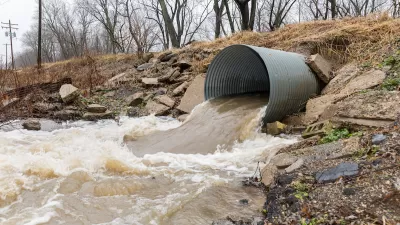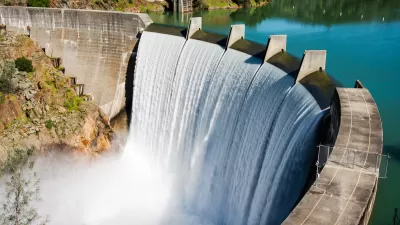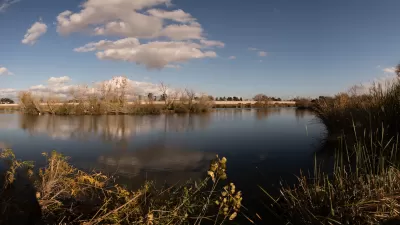Thousands of centuries-old buildings protect the region’s natural springs and serve as community wells and gathering places.

A series of ‘water temples’ known as naula continue to serve Himalayan communities hundreds of years after they were built. In a piece for Reasons To Be Cheerful, Geetanjali Krishna explains how the ancient structures, built atop natural springs to protect the water supply and make it easier for people to fill their vessels, have been used by communities in Northern India for centuries.
Climate change and drought are drying up many of the naulas, putting local residents at risk of running out of water. Now, community groups are developing restoration plans to replenish groundwater reservoirs and bring dry naulas back to life. One group, the Central Himalayan Rural Action Group (CHIRAG), has contributed to the restoration of over 6,000 springs.
According to Krishna, “Reviving springs has the potential to transform more than just the lives of Himalayan communities for whom springs are an important source of drinking water: Reports suggest that these springs contribute substantially to the base flow of large Himalayan rivers, and reviving them could, in the long term, improve the hydrology of the densely populated river basins of the Ganges, Brahmaputra and Yamuna.”
FULL STORY: Ancient Himalayan Water Temples Are Meeting Modern Needs

Alabama: Trump Terminates Settlements for Black Communities Harmed By Raw Sewage
Trump deemed the landmark civil rights agreement “illegal DEI and environmental justice policy.”

Planetizen Federal Action Tracker
A weekly monitor of how Trump’s orders and actions are impacting planners and planning in America.

The 120 Year Old Tiny Home Villages That Sheltered San Francisco’s Earthquake Refugees
More than a century ago, San Francisco mobilized to house thousands of residents displaced by the 1906 earthquake. Could their strategy offer a model for the present?

In Both Crashes and Crime, Public Transportation is Far Safer than Driving
Contrary to popular assumptions, public transportation has far lower crash and crime rates than automobile travel. For safer communities, improve and encourage transit travel.

Report: Zoning Reforms Should Complement Nashville’s Ambitious Transit Plan
Without reform, restrictive zoning codes will limit the impact of the city’s planned transit expansion and could exclude some of the residents who depend on transit the most.

Judge Orders Release of Frozen IRA, IIJA Funding
The decision is a victory for environmental groups who charged that freezing funds for critical infrastructure and disaster response programs caused “real and irreparable harm” to communities.
Urban Design for Planners 1: Software Tools
This six-course series explores essential urban design concepts using open source software and equips planners with the tools they need to participate fully in the urban design process.
Planning for Universal Design
Learn the tools for implementing Universal Design in planning regulations.
Clanton & Associates, Inc.
Jessamine County Fiscal Court
Institute for Housing and Urban Development Studies (IHS)
City of Grandview
Harvard GSD Executive Education
Toledo-Lucas County Plan Commissions
Salt Lake City
NYU Wagner Graduate School of Public Service





























